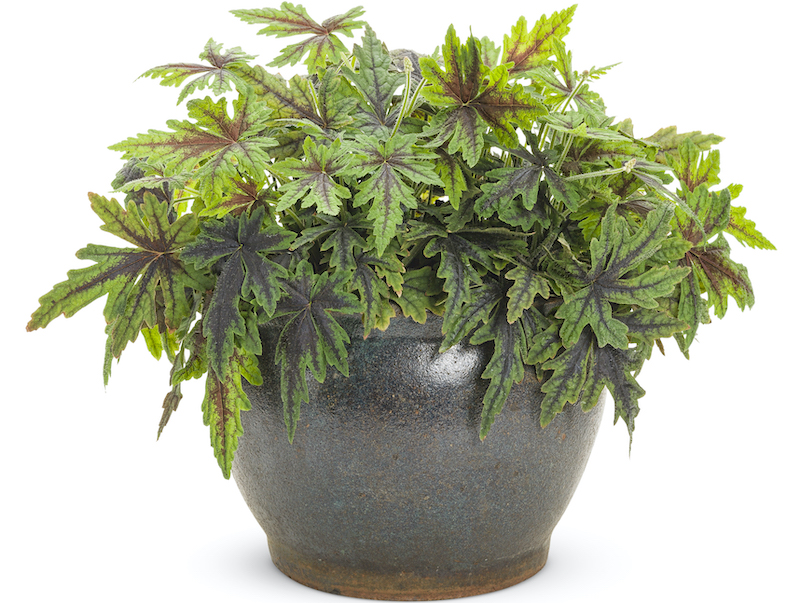Growing Foamflower
Low growing and native to the Eastern United States, Foamflower (Tiarella cordifolia) is an easygoing woodland plant that can quickly fill in any shady garden. With leaves from chartreuse to green to burgundy that rarely grow taller than 12 inches, the Foamflower gets its name from its petite, fuzzy, star-shaped flowers that perch on top of slender stalks. These flowers are typically white but can be found in shades of pink as well. Growing best in shady to partly shady areas, Foamflower prefers soil that is consistently moist. As a deer-resistant perennial, plant Foamflower in your woodland and shade gardens as a groundcover.

Planting Foamflower
Foamflower is a shade perennial, doing well with a bit of morning sun but also succeeding in shadier locations. In deep shade, however, the vibrant colors of Foamflower’s leaves may fade. Planting Foamflower in shade aids in keeping the soil consistently moist, something that is ideal for this perennial. Once established, Foamflower can tolerate brief periods of dryness. Foamflower will grow best in soil that is rich with organic matter, not dissimilar from that found in its native woodlands. To plant Foamflower, dig a hole that is larger than and of equal depth as the root ball. When using it as a ground cover, plant Foamflower starts 1 to 2 feet apart where they can grow together and fill in quickly.

Watering Foamflower
Water Foamflower regularly and deeply, especially in the first year as it is becoming established in your garden. This plant prefers soil that is constantly moist, though it can survive periods of drought. While Foamflower thrives in moist soil, it will not do well in soggy, waterlogged soil, so it is important to plant it in well-draining soil from the jump. When kept in containers and pots, water Foamflower more frequently to prevent it from drying out completely.
Fertilizing Foamflower
When first planting Foamflower, amend the soil with compost to provide it with consistent, organic nutrients. In rich soil, Foamflower is not a heavy feeder and can go years without needing supplemental fertilizer. If your soil is of poor quality, however, Foamflower will benefit from a spring application of a balanced, slow-release fertilizer. Plants in pots often need a bit more fertilizer, as watering can leach even rich potting soil of its nutrients over time. Fertilize Foamflower in pots once a month with a balanced liquid fertilizer.
Pruning Foamflower
Foamflower spreads through underground runners, which can be cut back or removed if you are trying to contain it to a certain area. As an herbaceous perennial, Foamflower dies back in climates with cold winters, though the dead leaves can be left to provide the plant’s crown a bit of protection through the winter. Cut back any dead leaves in the early spring before new growth arrives. As flowers fade in the summer, you can remove them to keep this ground cover looking clean and tidy.
Caring For Foamflower in Pots
Plant Foamflower in rich, well-draining potting soil. When choosing a pot, be sure to pick a large pot with drainage holes to allow Foamflower room to grow and a route to drain off excess water. Foamflower prefers consistently moist soil, so be sure to water your pots and containers accordingly. While Foamflower is cold hardy, keeping plants in pots exposes their roots to more temperature extremes. For this reason, bring any pots containing Foamflower into an unheated garage in the winter to both protect the roots from the cold and allow the plant to go dormant.

Winter Care for Foamflower
Foamflower is an herbaceous perennial. This means that it will go dormant in the winter and its leaves will die back to the ground. Allow these leaves to stick around through the winter where they can provide the crown with a buffer from the cold. In climates with mild winters, Foamflower often stays evergreen and can provide winter interest. When kept in pots, move Foamflower into a protected garage in the winter to keep its roots from freezing. Once temperatures have started to warm in the spring, the dead leaves can be cut back and pots can be brought back outdoors to encourage new spring growth.
 |
Author Lynn Gusman - Published 3-20-2023 |
